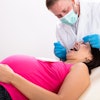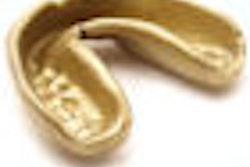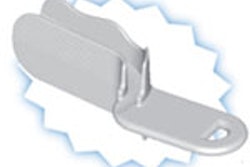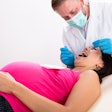
Mouthguards may protect teeth from trauma, but the bacteria and fungus they contain are making athletes sick, according to researchers from Oklahoma State University (OSU).
In a study presented at the recent American College of Sports Medicine annual meeting in Seattle, the researchers reported that mouthguards worn by football players may harbor harmful microorganisms, including antibiotic-resistant bacteria.
“Mouthguards should be discarded at least every two weeks.”
— R. Thomas Glass, D.D.S., Ph.D.
"Mouthguards should be discarded at least every two weeks," said R. Thomas Glass, D.D.S., Ph.D., a professor of forensic sciences, pathology, and dental medicine and an adjunct professor of microbiology. In addition, he recommends sanitizing the mouthguards between uses, a protocol that no athletes routinely follow, as far as he knows.
Asked to comment on the study, John Molinari, Ph.D., director of infection control and safety at the University of Detroit Mercy School of Dentistry, noted that finding bacteria on mouthguards doesn't prove they are making people sick. "People assume the bacteria automatically cause infection," he said. "You need to show us the cases."
Dr. Glass and his colleagues say they do have evidence that mouthguards cause lesions in the football players' mouths, and they will present it in a forthcoming article in Sports Health. "It's actually causing disease," Dr. Glass said.
Lesions increased
For the study, the researchers analyzed the mouthguards of 62 Division I football players from the National Collegiate Athletic Association (NCAA). Before the study began, the 62 players had a collective total of 85 lesions (1.4 per player), Dr. Glass said. By the end of the season, the 53 who completed the study had 198 lesions (3.74 per player). In addition, the lesions increased in severity over the season.
The area of the mouth in which the lesions appeared further supported the idea that the mouthguards were causing them, Dr. Glass said. The number of lesions on the palate, which isn't touched by a mouthguard, decreased. But the number of gingival, buccal, and tongue lesions increased.
Much of the research focused on the organisms on the mouthguards. The researchers examined 84 mouthguards and found 164 gram-positive cocci, 158 gram-positive bacilli, 13 gram-negative cocci, and 23 gram-negative bacilli. Of the gram-positive cocci, 57% were methicillin-resistant and 5% were resistant to vancomycin, one of the antibiotics of last resort against methicillin-resistant bacteria, said Stan Conrad, Ph.D., an OSU professor of microbiology.
In addition, the researchers found 21 isolates of yeast and 108 of mold. "Almost anyone who is breathing down large quantities of mold spores has the potential to develop exercise-induced asthma or other respiratory diseases," Dr. Glass said.
The researchers were unable to measure respiratory effects in this study, and they did not culture microorganisms in the athletes' lesions. However, in a previous article (General Dentistry, September/October 2007, Vol. 55:5, pp. 436-440), they reported a case in which they found the same microorganism in an athlete's infected leg as on his mouthguard. The researchers said that mouthguards become jagged because athletes chew on them. The jagged edges may cut into soft tissue, allowing bacteria to enter the bloodstream. The athlete in the case study had a bruised leg, and blood may have rushed to the site, carrying bacteria with it, they theorized.
Athletes should throw away their mouthguards every two weeks or as soon as they become jagged, whichever comes first, Dr. Glass said. Mouthguards sell for less than $2 each off the shelf, he noted. He also said there is no advantage to custom-made mouthguards; in fact, a tighter fit may increase the enclosed spaces where microorganisms flourish.
Dr. Glass and Conrad also recommend that athletes use denture-sanitizing products daily on their mouthguards. While the pathogens can escape into the pores in the plastic that are too small for sanitizer molecules to enter, the sanitizers can reduce the number of bacteria on the surface, they said.
Ultraviolet sanitizer
At least one mouthguard manufacturer, Brain-Pad, is now offering a specially designed mouthguard sanitizer, NatureZone, that uses ultraviolet light and ozone to sanitize the mouthguard. In promoting it, the company cites Dr. Glass' research about the dangers of pathogens on mouthguards and says the device "will destroy 99.9% of any known infectious bacteria."
Dr. Glass and Conrad said they couldn't comment on NatureZone because they haven't studied it directly. But whether reducing the number of bacteria by 99.9% is sufficient depends on how many bacteria are on the mouthguard to begin with, Dr. Conrad said. "It doesn't matter much if you reduce the amount of bacteria from 1013 to 1010."
Ultraviolet light may not be effective because shadows may be within microscopic pores and fissures that shelter microorganisms from light, Dr. Glass said. "The effective killing drops off substantially with the square of the distance," he said. Ozone has the same problems, he added in an e-mail.
Asked for a response, Brain-Pad spokesman Chris Bolan provided DrBicuspid.com with a copy of a test report conducted by Food Lab-Taipei earlier this year. The test showed a 99.98% or 99.99% reduction of Staphylococcus aureus, Escherichia coli, Pseudomonas aeruginosa, and Salmonella typhi.
Copyright © 2009 DrBicuspid.com



















